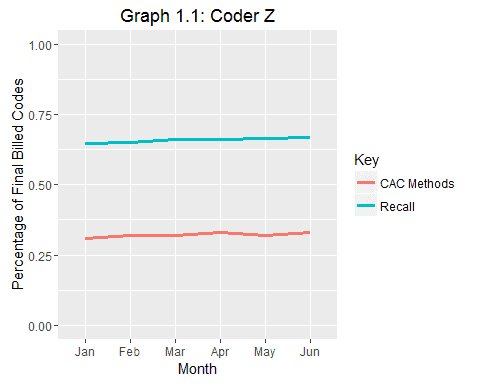Inside Angle
From 3M Health Information Systems
Smartphones and computer-assisted coding
When I entered my major’s program in college, I decided I could no longer go without a smartphone. Up until that point, I had gotten by with just a regular cell phone that offered texting, talking and photo capabilities. Instead of getting a smartphone before I left for college, I chose to save the money and put it towards other college expenses. What changed? When I entered my major, which happened to be Business Management, my program was heavily team-based. The first semester I was assigned to work with the same group of 4-6 people for all of my classes. The three others on my team had smartphones, and their ability to group text (without texts coming back as individual and often out of order texts) and respond quickly to emails throughout the day put me at a disadvantage, unable to provide as much input. So, I got my first smartphone and quickly became a fully functioning member of my group. It was amazing how much easier it was to stay on top of our assignments and meeting times!
Maximizing the use of a smartphone
When I first got my smartphone, my team members and other friends quickly helped me set up some features that aren’t explained on the initial set up. I remember they were all so excited for me, pointing out everything I could do with the new technology. It was a little overwhelming and I realized I had lot to learn! Over the next couple of years, I slowly started using my phone for more than just email, weather updates and group texting. I checked my grades online through my phone, ordered Christmas presents, tracked my health, managed money and many other tasks. In recent years, I’ve expanded the use of my phone even more to include much of my reading, news and entertainment. Clearly, my understanding and use of my smartphone has increased and made the phone even more valuable. I know there are still ways to improve how I use my phone, but when I think about all that I can do now and how much faster it is than my old methods, I am so grateful that I’ve focused on adapting to the technology!
Computer-assisted coding
So, how does this relate to computer-assisted coding (CAC)? Just like smartphones changed the world of communication, computer-assisted coding entered the market and revolutionized the way we knew coding. CAC is designed to increase productivity and accuracy, but sometimes it’s easy and tempting for users to not aggressively increase their use of the system. With my smartphone, I was missing out on the benefits by not using it to its full capacity (or at least a lot closer to its full capacity). Computer-assisted coding users similarly miss out on additional benefits when they don’t maximize their use of the system.
What does this look like in terms of data? I introduced a formula in a previous blog post, but let’s briefly review it and show an example. To see how much more a coder could use a computer-assisted coding system (called “Opportunity for Increased Use of CAC”), we take the Recall – CAC methods. CAC methods is the sum of all coder acceptance methods that were used with CAC, and Recall is the amount of accepted codes (codes the engine and the coder agreed on) divided by the total final billed codes. Thus, Recall = CAC Accepted Code Count / Final Billed Code Count. (For further explanation on Opportunity for Increased Use of CAC, see my earlier blog post, “Coder Acceptance: Am I using the correct coding methods?“) Let’s examine Coder Z’s coding behavior over time in graph 1.1 below.
You can see from Graph 1.1 that Coder Z could double their current use of CAC Methods! If they use CAC more, they will gain additional value—value that is currently not being maximized! With some training and focus on changing old habits, Coder Z’s graph could have a trend similar to Graph 1.2 below.
Please note: Not every coder’s usage will increase this slow or this fast – but the general idea is that the use of CAC methods should be increasing over time and getting closer to recall. In this way, they are maximizing the use of the system and, as with a smartphone, gaining more value than previously capable.
Clarissa George is a business intelligence specialist at 3M Health Information Systems.




